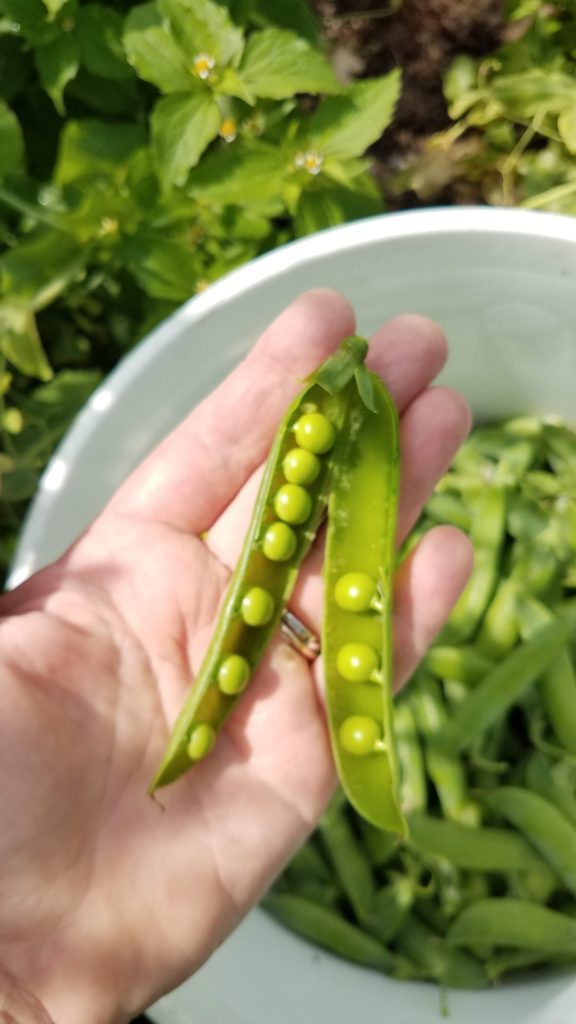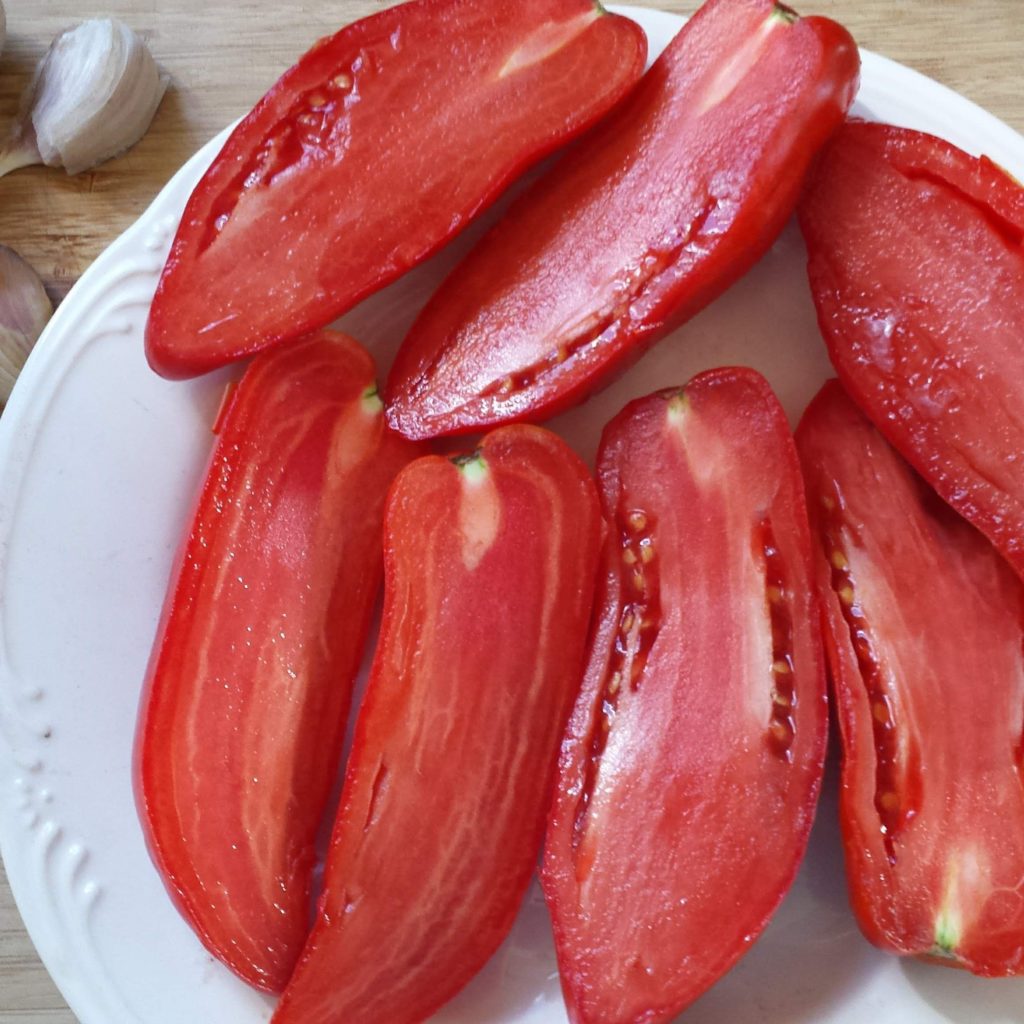By Roberta Bailey
In the last two years, seed companies experienced record sales which translates to new gardeners turning ground for the first time, some veteran gardeners increasing their plots and farmers planting more acreage to meet the growing demand for local, fresh produce and value-added specialty items. Food security is on people’s minds. This reminds me what it was like to try to figure out how to grow each vegetable and also determine how much I needed to plant to fill the freezer, canning jars and root cellar.
Planning to Fill Your Larder
Here is how I think about growing food and calculating what I need to plant in order to feed myself for the winter: I consider what I like to eat, how I like to prepare it and how often I want to eat it.
First, ask yourself how you like to eat the particular vegetable or fruit you plan to put up. There’s no sense making jars of dill pickles if you don’t really eat many pickles. Twenty jars of plum dipping sauce may not get used before they get old; maybe plum juice is a better way to go. Do you like applesauce with peels or without? Stewed tomatoes or sauce? Canned or frozen peas and corn?
Even after 40 years of putting food by, I am always adjusting my calculations. A bumper crop of paste tomatoes one year means I need fewer tomato plants the next year. A drought means I plant more next year. Having company for five weeks means I need to grow more pole beans to feed guests and still have enough to freeze for winter. The year I erected my high tunnel meant I ate more fresh greens and needed less frozen broccoli and spinach.
To calculate how much of a particular crop you need for the year, factor in whether you want to just eat it in summer as you harvest it or whether your goal includes putting some by for winter. When I think about broccoli, I plan to eat it fresh in late summer and fall, but also to have enough for winter. So, I count the weeks when I will be relying on frozen broccoli and figure how many times each week that I will want to eat it. Fresh harvest will be from July through November, so December through June I will eat frozen broccoli. Seven months, 28 weeks and two meals per week means that my goal is 56 bags of broccoli, most with two servings in them. Some weeks I will eat more and, come June, I will be sick of frozen food and very happy to just eat salad from the garden. I plant 20 to 25 broccoli plants per year to cover my needs.
Yields are subject to drought and bug or critter pressure, so you may plant extra and share your surplus or end up with just enough to cover your needs. I plant 15 to 20 hills of winter squash and pumpkins, and usually have a lot to share. In a poor squash year, I still have plenty for winter. Extra pumpkins go to supplement my chickens’ diets all winter.

Methods of Preserving the Harvest
Some harvests are easy. Onions and squash can be cured and stored in a cool room. Carrots, potatoes, beets and other root crops can be stored in a root cellar. (I walled off a corner of my basement and added a vent pipe through the foundation wall for cooling the space. A bulkhead can be turned into a root cellar.) Apples and winter pears can be stored in a root cellar. I also store leeks in a 5-gallon bucket with moist shavings in the cellar.
Dried foods preserve nutrients well and do not rely on a freezer and electricity, nor do they need to be kept from freezing like canned goods do. They are portable. Dried fruit is a straightforward snack. Dried peas and sweet corn work well when reconstituted. But do you like the texture of dried food? For me, dried broccoli is weirdly rubbery once reconstituted and I didn’t eat much of it. It is a waste of your time and energy to put up something in a form that does not get used.
Lacto-fermentation works incredibly well for many foods. Fermented foods like sauerkraut are put up with a specific ratio of non-iodized salt per pound of produce being processed. The possibilities are endless. Grated ginger carrots, hot pepper purees, broccoli, cauliflower, beets and cabbage are just the basics. Three excellent books on fermentation are: “Wild Fermentation” by Sandor Ellix Katz, and
“Fermented Vegetables” and “Fiery Ferments,” both by Kristen and Christopher Shockey.
For food preservation references, I recommend “Stocking Up” by the Staff of Organic Gardening and Farming and “The Complete Book of Small-Batch Preserving: Over 300 Recipes to Use Year-Round” by Ellie Topp and Margaret Howard.

Planting for Processing Here is a chart of some basic yields to offer a place to start. Factors such as plant spacing, seed germination, water needs, nutrients, varietal characteristics and seasonal weather conditions will effect yields.
| Vegetable or Fruit | Seed or Transplants per 25-ft. row | Harvest Yield | Amount of Produce per Quart | Canning or Freezing Yield |
| beets | 300 seeds (1/4 oz.) | 15-20 lbs. | 2 lbs. | 8-12 quarts |
| broccoli | 10-12 plants (100-300 seeds per gm.) | 12-20 lbs. | 1 1/2-2 lbs. | 8-10 quarts |
| cucumbers | 50 seeds (2 gm.) | 30 lbs. | 1-2 lbs. | 15-30 quarts |
| corn, sweet | 50 seeds (1 oz.) | 8-10 dozen ears | 8-10 ears | 12-20 quarts |
| green beans | 200 seeds (2-3 oz.) | 10-20 lbs. | 2 lbs. | 5-10 quarts |
| kale or collards | 75-100 seeds (1/2 gm.) | 15-20 lbs. | 2 lbs. | 7-10 quarts |
| peas, shelling | 2-3 oz. | 15 lbs. (in shell) | 4-5 lbs., unshelled | 3-4 quarts |
| peppers | 25 plants | 25-50 lbs. | 1-2 lbs. | 20-40 quarts |
| spinach | 250 seeds (1/8 oz.) | 10-15 lbs. | 2 lbs. | 5-8 quarts |
| tomatoes | 10-15 plants | 30-40 lbs. | 2-3 lbs., packed whole | 12-20 quarts |
| apples (for sauce) | – | 30 lbs. | 2 lbs. | 14-15 quarts |
| peaches | – | 10 lbs. | 2 lbs. | 5-6 quarts |
| pears | – | 15 lbs. | 2 lbs. | 7-8 quarts |
Remember, this is the science of life. Take the time to really savor its sweetness. There is no better tasting food than what comes straight from your garden. Have fun. Take notes, or not. It’s ok to make mistakes. You may still be able to eat them. And you get another chance next year. You join the seasonal cycles of the gardener where winter is for optimistic planning; spring and summer are for harvests and putting food by; fall is for more harvests and putting food by, as well as making compost and already setting intentions for the next year. Gardening truly is the science of a lifetime.
This edition of the Harvest Kitchen was originally published in the Spring 2021 issue of The Maine Organic Farmer & Gardener.
Looking for more seasonal recipes? Sign up for MOFGA’s Local and Organic Kitchen Newsletter.